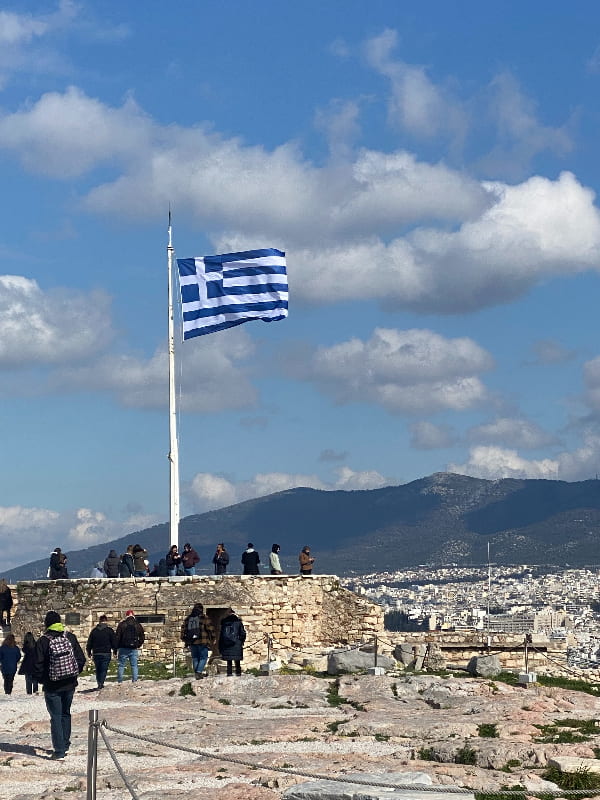A Sea of Blue and White
Emily Cabreja
If I am being honest, I have never looked at Athens, Greece as a place to feed my curiosity. Personally, I knew two things about Greece: Mamma Mia and Greek mythology– which was to say I knew nothing about Greece and my idea of the country was stuck in the BC era with white togas and Socrates. Although these are important aspects of Greece’s identity and history, it is a water downed and generalize idea of what forms Greek culture.
First, the landscape is amazing.
I come from a place with no mountains, before going to Athens, I could not tell you what I imagined a mountain to look like nor why people would consider them “beautiful”. Luckily, Athens is surrounded by rocky, blue-grey mountains rich in minerals; some were covered in the soft white dust of snow or black rock. However, the mountains that sit closest to the heart of Athens home the famous Acropolis.
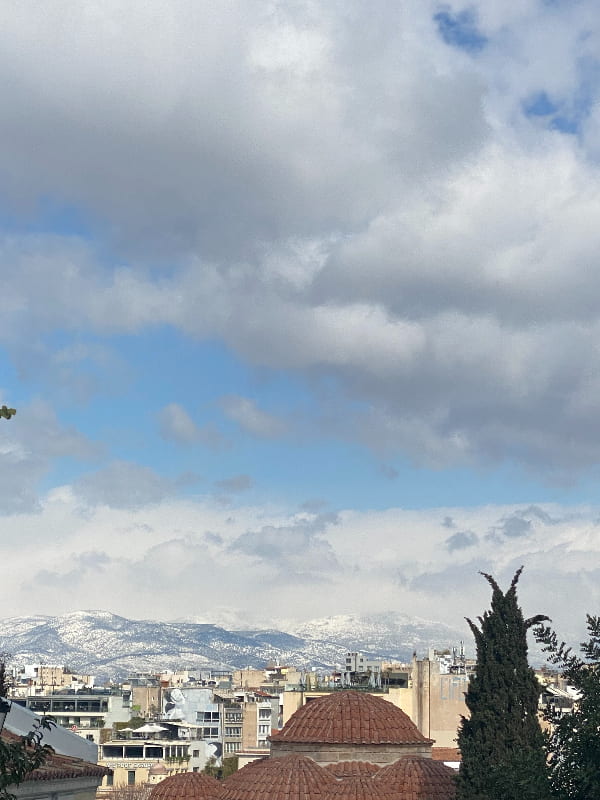
Words cannot express my amazement looking up and seeing the bone-white marble stand proudly elevated to the highest point of the mountain. Its columns worn from centuries of war and exposure to the environment contrast against the ocean blue sky of the day. It stood unwaveringly and boldly as a physical reminder of all the human lives that once sought after its walls as a place of worship and to protect. Before the Acropolis was a tourist attraction, it was once a sacred land dedicated to the goddess Athena, the protector and war goddess who the city of Athens is named after. To the left of the Acropolis resides the Virgins of the Parthenon (or more correctly replicas of the Virgins as it was stolen from Greece by the British and have yet to be returned), the women stand straight, full of holes from aging, righteous prudence, and unwavered by the cold of the day. At the top of the Acropolis, one can see a full view of Athens, the Aegen sea and outline of mountains along with the descent of flat, Meditarrean houses down the side of its slope. The birthplace of Greek tragedy to the east, and the death place of Socrates a 20-minute walk away. Everything in full, and perfect view.
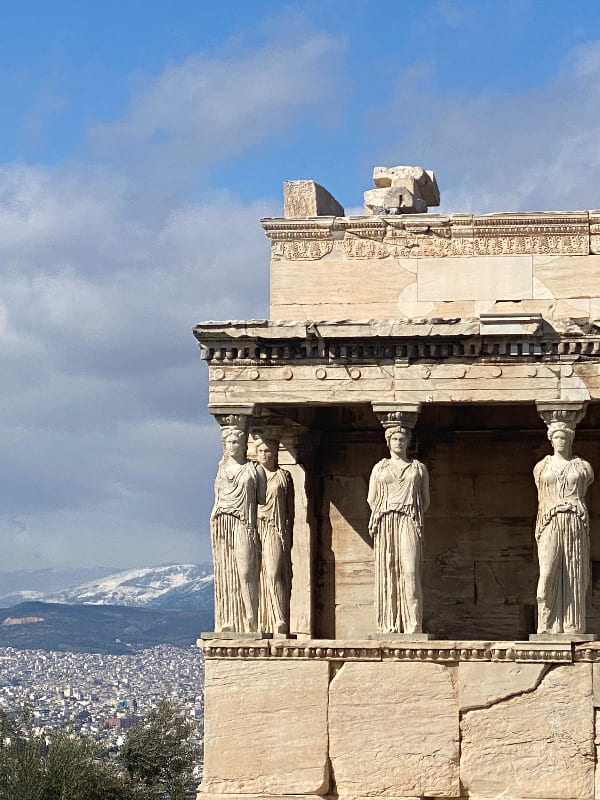
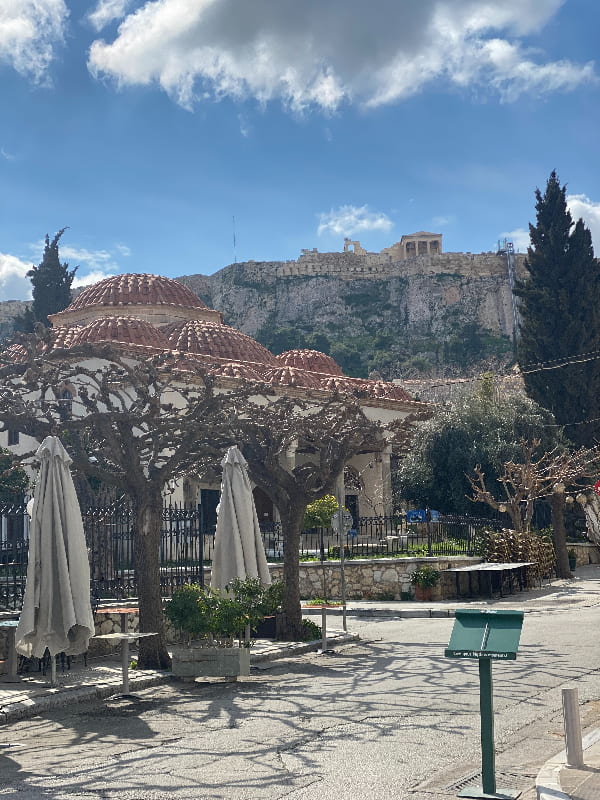
Secondly, the food is amazing.
Do not get me wrong, I love the food here in London, but nothing will beat eating freshly grilled octopus next to the ocean with the sun shining happily in the sky (without the possibility of rain). Fresh Greek salad with blocks of feta cheese complimented with the tangy taste of wine leaves and freshly made tzatziki sauce with every meal. Plus, in comparison with London the meals are affordable, which makes them even more enjoyable. Although I did not have much time to explore different kinds of food one that I tried and did not expect to like was feta cheese with honey. Again, it sounds weird, but I promise it’s amazing.
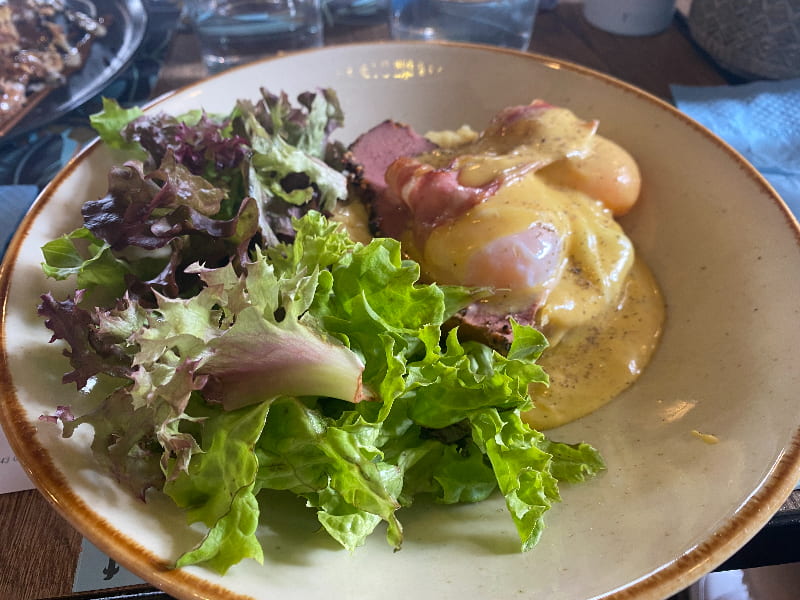
Lastly, the ocean is beautiful.
I have grown up in the Ocean State surrounded by bodies water of every shape and color, I have frequently visited the clear waters and sugar white shores of the Dominican Republic, but Greek oceans were one of a kind. On our way to the Temple of Poseidon we followed the Greek coastline, watching the as the city changed into country then into a small town. To the right was the ocean, following us throughout our road trip staying the same aquamarine, clear blue. Beautiful, cold, and dangerously welcoming.
All in all, Greece is timeless. It is surrounded with ancient and medieval buildings, full of color graffiti and murals of every shade, markets are busy, and restaurants feel homey. It’s a wonderful place to be—white, blue, and everything in between.
